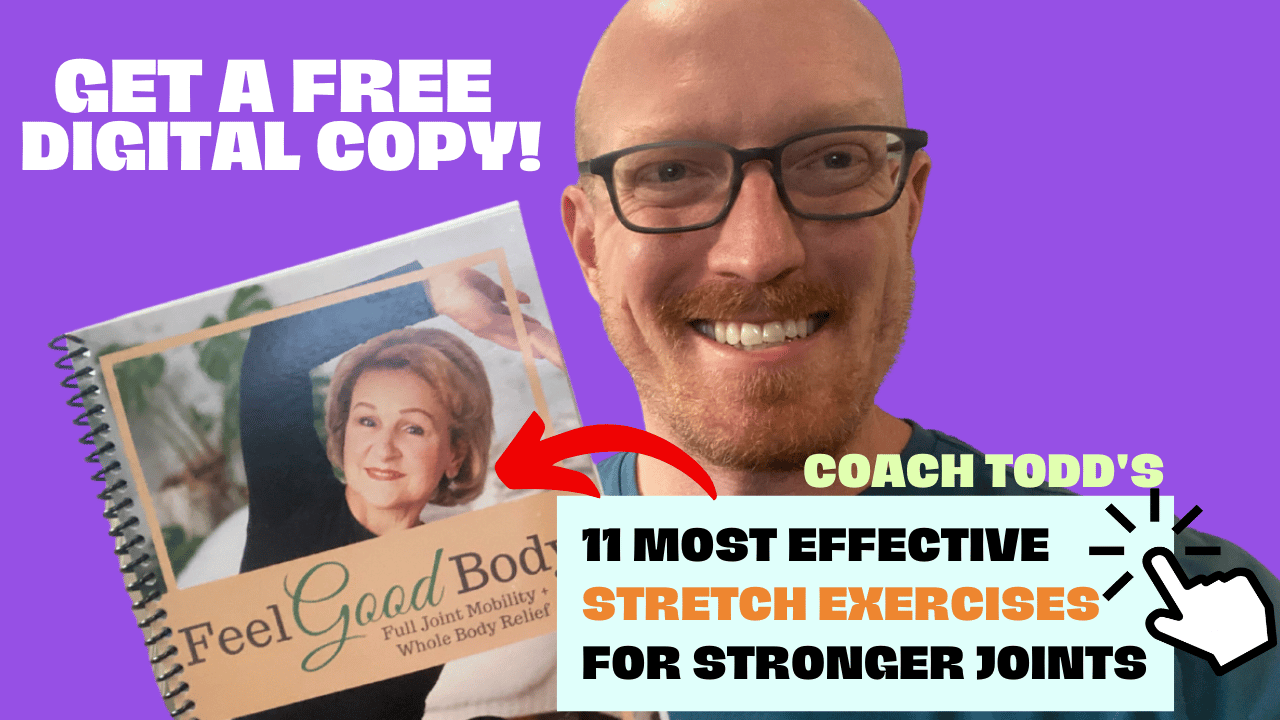Free download: Top 10 Natural & Easy Remedies for Joint Pain from Home. Learn these helpful remedies.
Estimated Reading Time: 7 minutes read
Lower back pain is a widespread concern affecting up to 80% of people at some point in their lives. It is not only discomforting but can also disrupt daily activities, impede mobility, and reduce overall quality of life. This kind of pain can occur due to numerous reasons, including poor posture, muscle strain, nerve irritation, or even conditions like arthritis. While minor lower back pain usually improves on its own within a few days or weeks, chronic pain that lasts for more than three months requires active management.
The spine’s normal curvature is maintained by several muscles that must function harmoniously to prevent discomfort or injury. An efficient way to manage and alleviate lower back pain is through targeted stretches and exercises. They provide immediate relief, and a consistent exercise regime can significantly reduce the chance of recurrent pain. In fact, studies show that without exercise, between 41 and 57 out of 100 people experience low back pain recurrence within a year, compared to only 27 to 31 out of 100 people who adhere to an exercise program.
Table of Contents
Understanding the Causes of Lower Back Pain
Lower back pain can be attributed to various factors, and gaining insight into its cause is essential to developing an effective treatment strategy. Several common reasons could contribute to the onset of lower back pain:
- Muscle or ligament strain: This typically occurs due to heavy lifting or sudden awkward movements. An unanticipated twist or pull can strain the muscles and spinal ligaments, leading to discomfort.
- Degenerative disc disease: As we age, our intervertebral discs can degrade, reducing their ability to cushion the vertebrae and potentially causing pain.
- Herniated or bulging discs: The soft material inside a disc can rupture or bulge, pressing on a nerve and resulting in back pain.
In the second category, certain medical conditions can also lead to lower back pain:
- Arthritis: Conditions such as osteoarthritis can affect the lower back, causing stiffness and pain.
- Skeletal irregularities: An irregular spine curvature, like scoliosis, can eventually lead to back pain if not properly managed.
- Osteoporosis: This condition weakens bones and can lead to compression fractures of the spine, causing pain.
Recognizing these causes can help individuals understand their pain better and work with healthcare professionals to devise suitable management plans.
Relieving Lower Back Pain Through Stretching and Exercise
Certain positions can bring about relief depending on the nature of your back pain. Some people find that bending forward (flexion) relieves their pain, while others find relief by bending backward (extension). The key is to stick to the stretches that alleviate your pain. Here are some recommended stretches and exercises:
A. Flexion Exercises
1. Forward Flexion Stretch
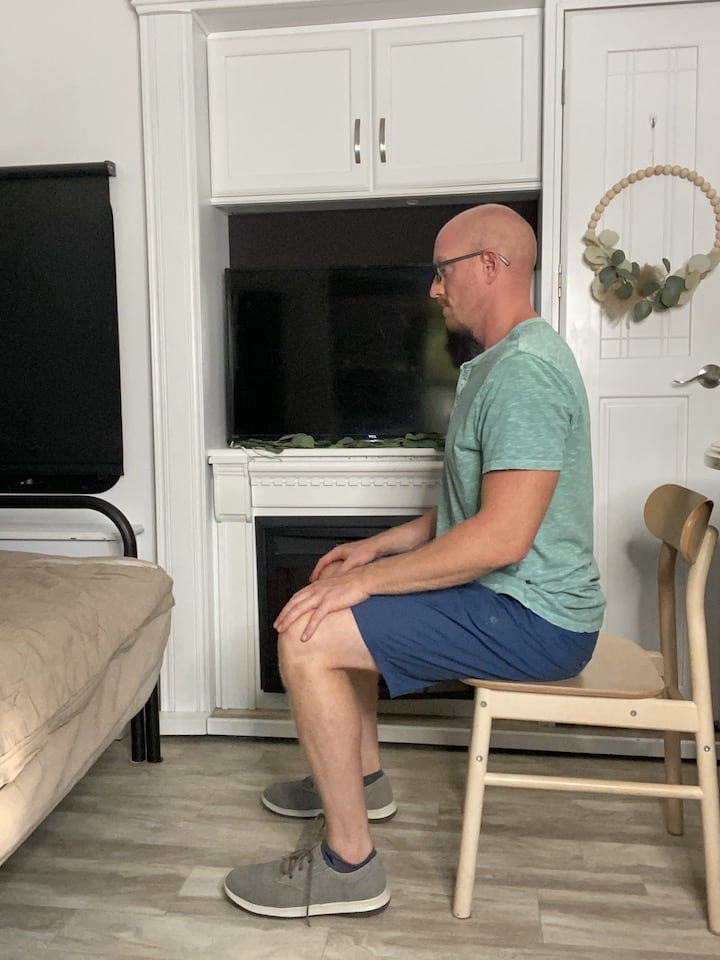
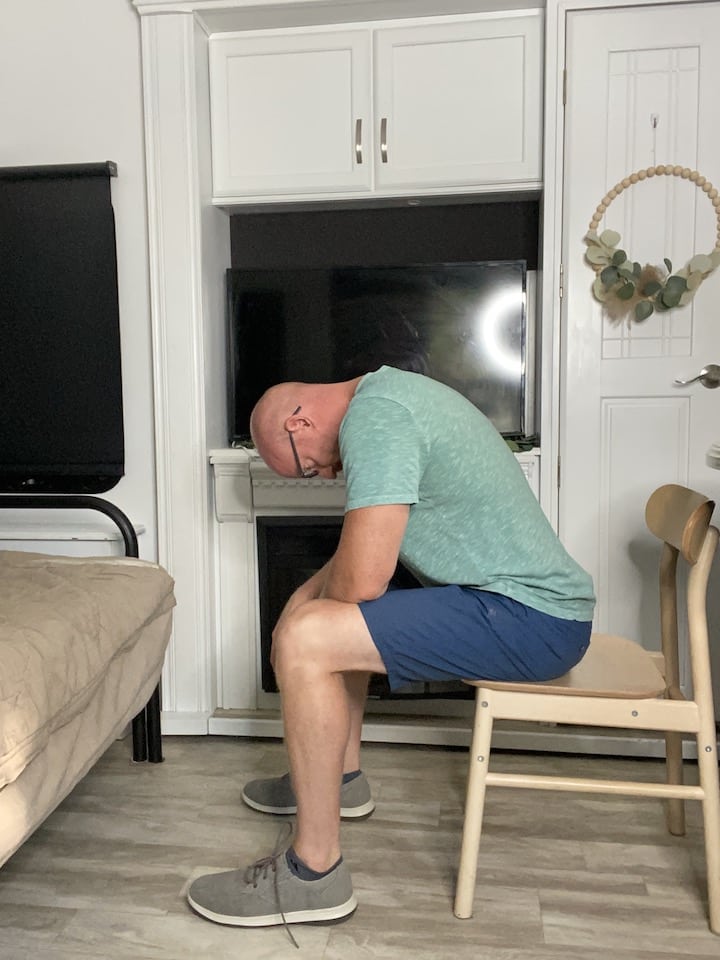
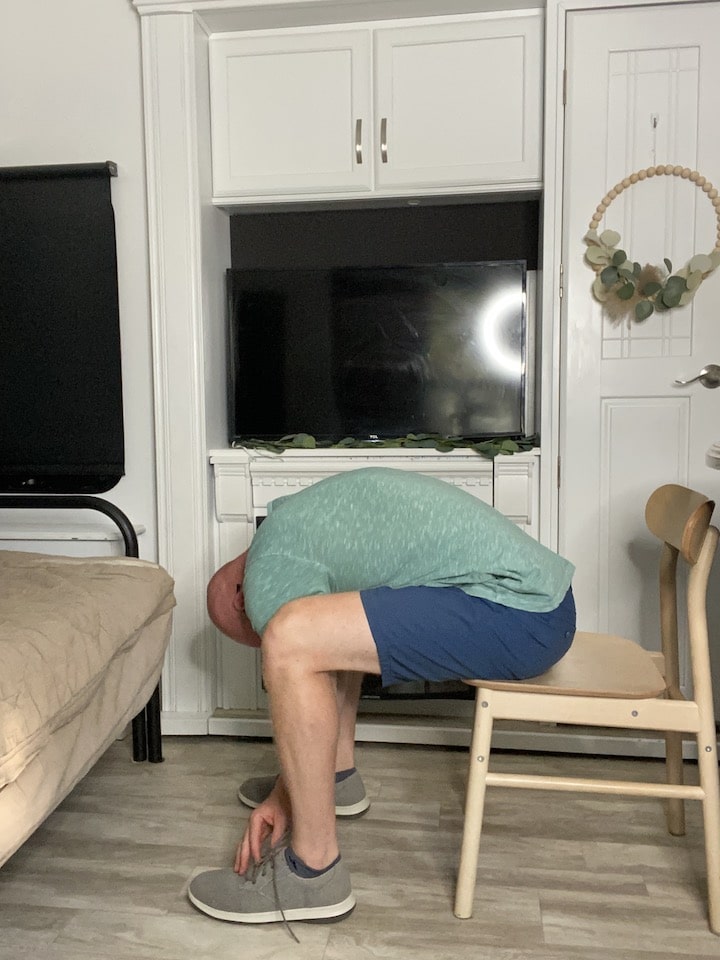
- Begin by sitting in a comfortable chair.
- Slowly start to bend forward, rounding your spine as far as you can tolerate comfortably.
- Allow your head and neck to relax forward as well.
- Hold this position for up to 30 seconds, if possible.
- Return to sitting upright.
- Repeat this stretch for 10 repetitions.
2. Child’s Pose
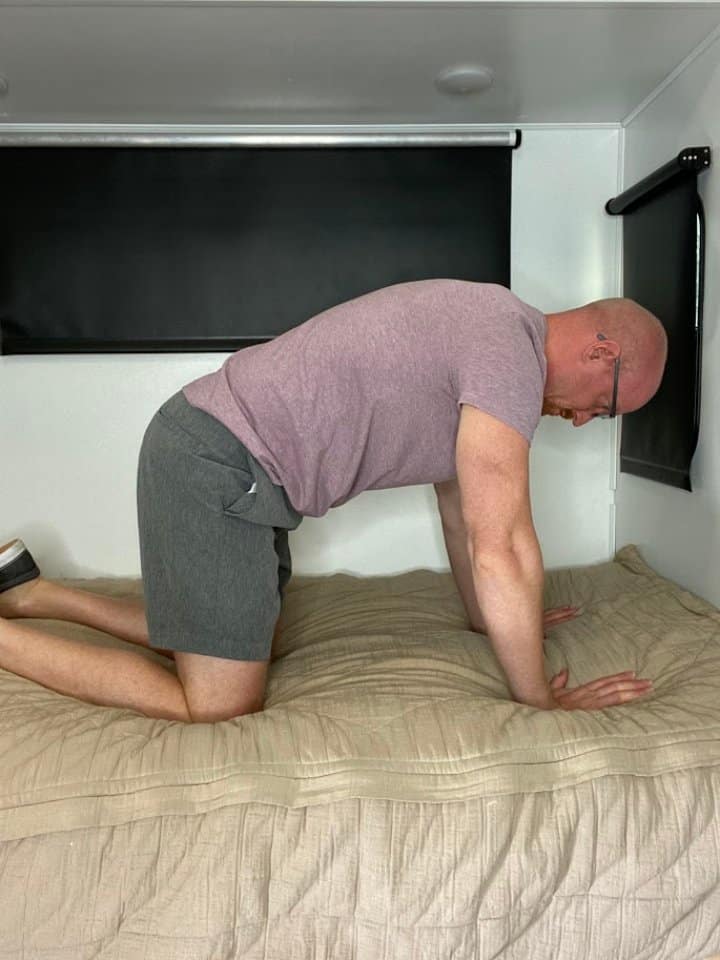
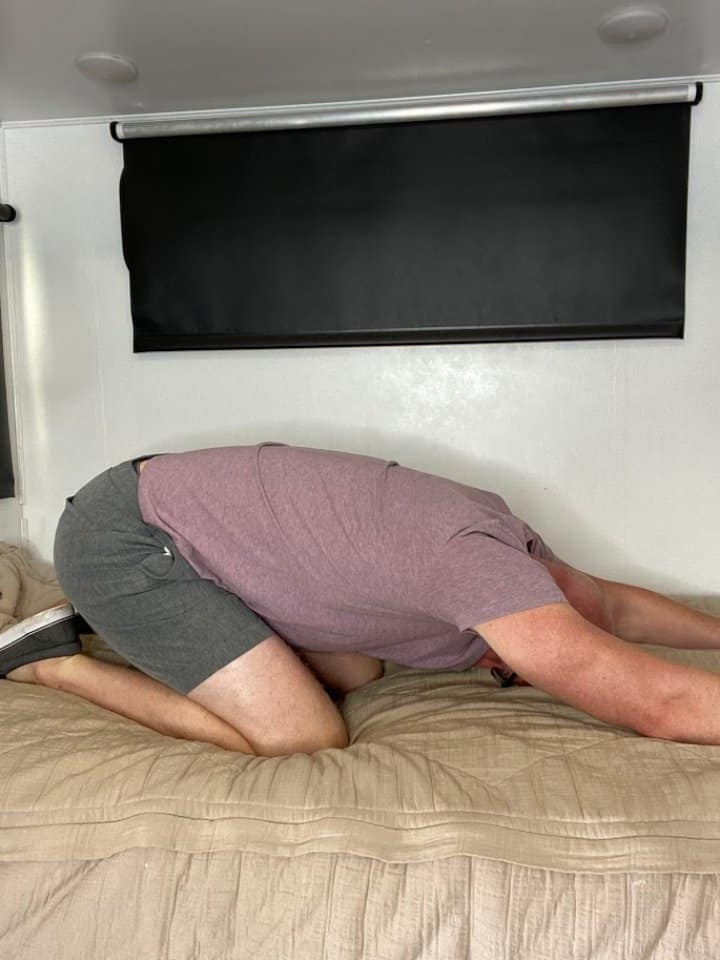
- Position yourself on your hands and knees (can be on your floor, bed, or couch).
- Sit the hips back towards the heels while simultaneously stretching the arms forward.
- Allow the back to round.
- Make sure to relax the head in this position.
- Hold for at least 30 seconds. Repeat 3 times.
3. Knee to Chest Stretch
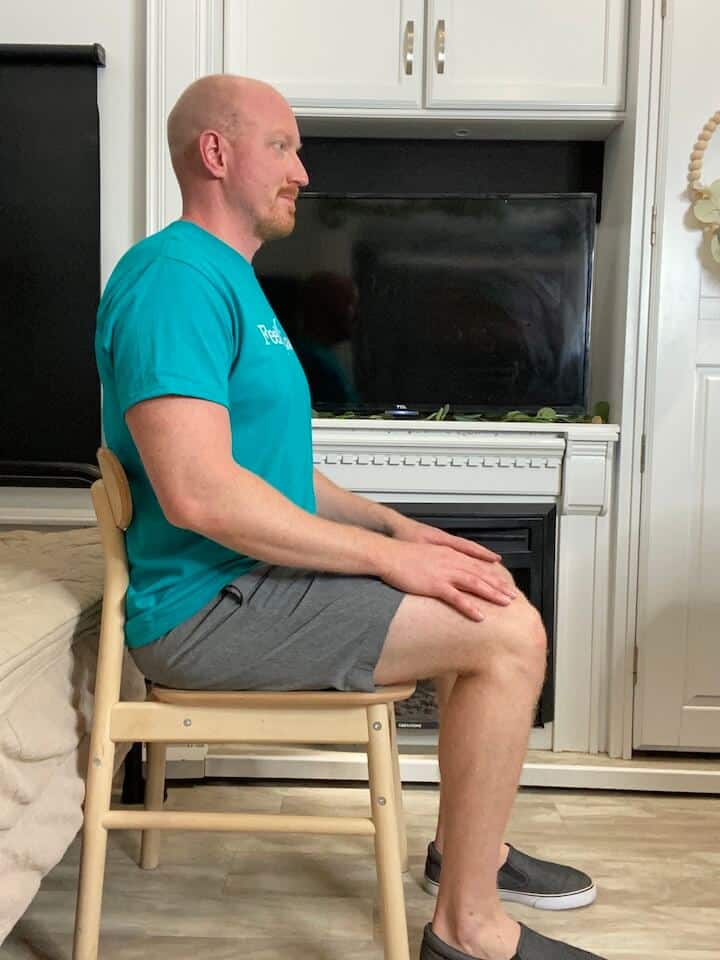
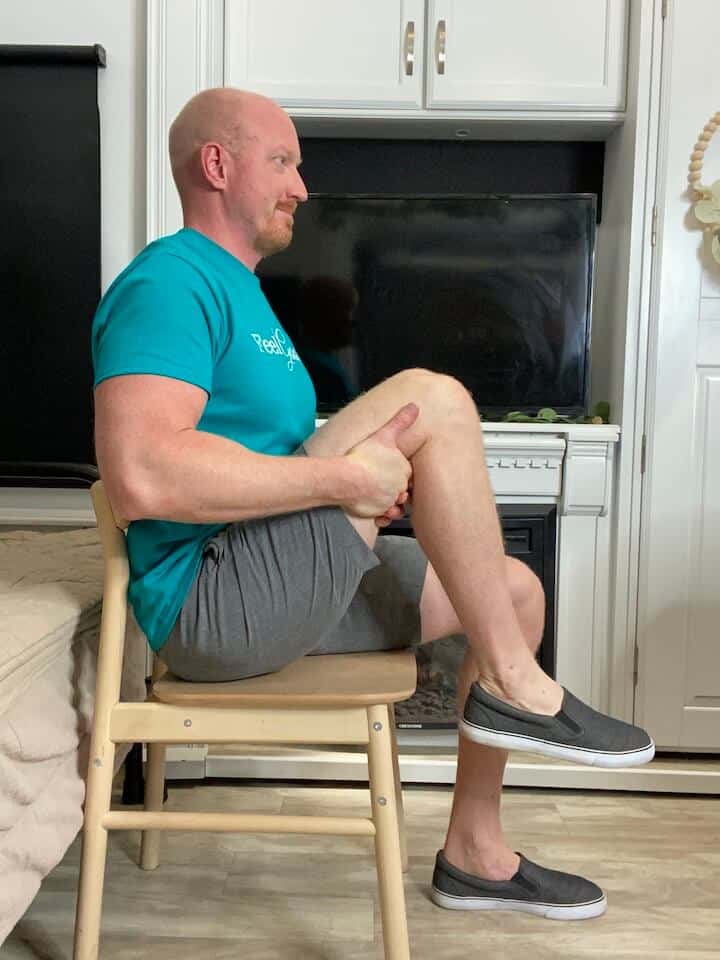
- Starting position: Laying on your back with your knees bent and feet flat on the bed. This is a nice, decompressed position for the spine to begin in.
- Reach the hands behind the thigh of one leg and slowly pull the leg so that your knee moves in towards the chest. Keep the intensity of the stretch gentle and the leg as relaxed as possible.
- Hold for at least 30 seconds.
- Repeat on the other side and a total of 3 sets.
4. Low Back Opener
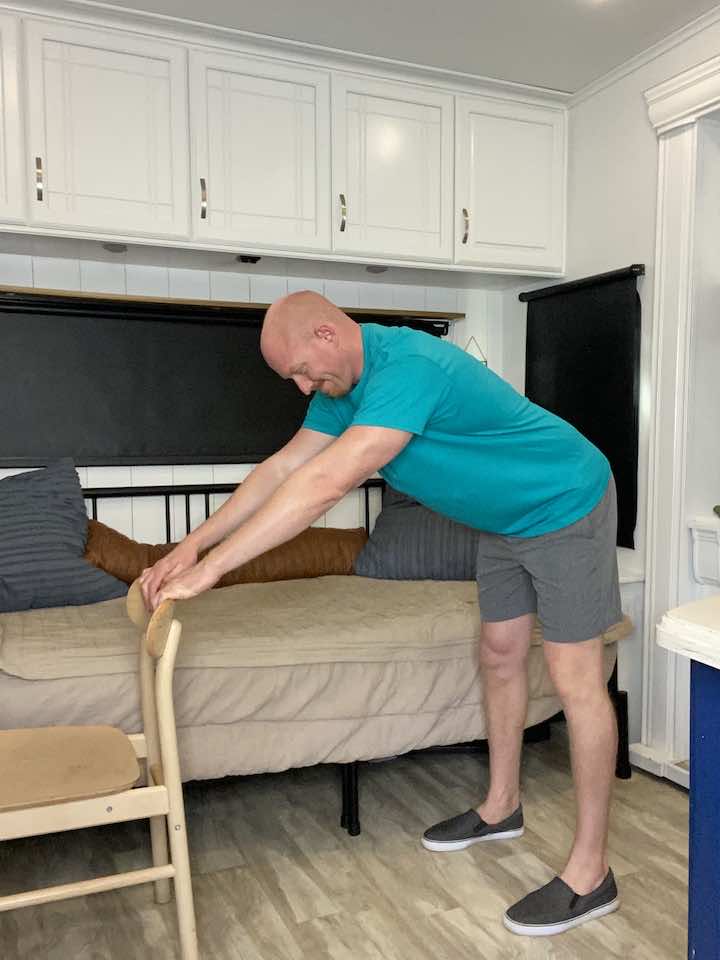
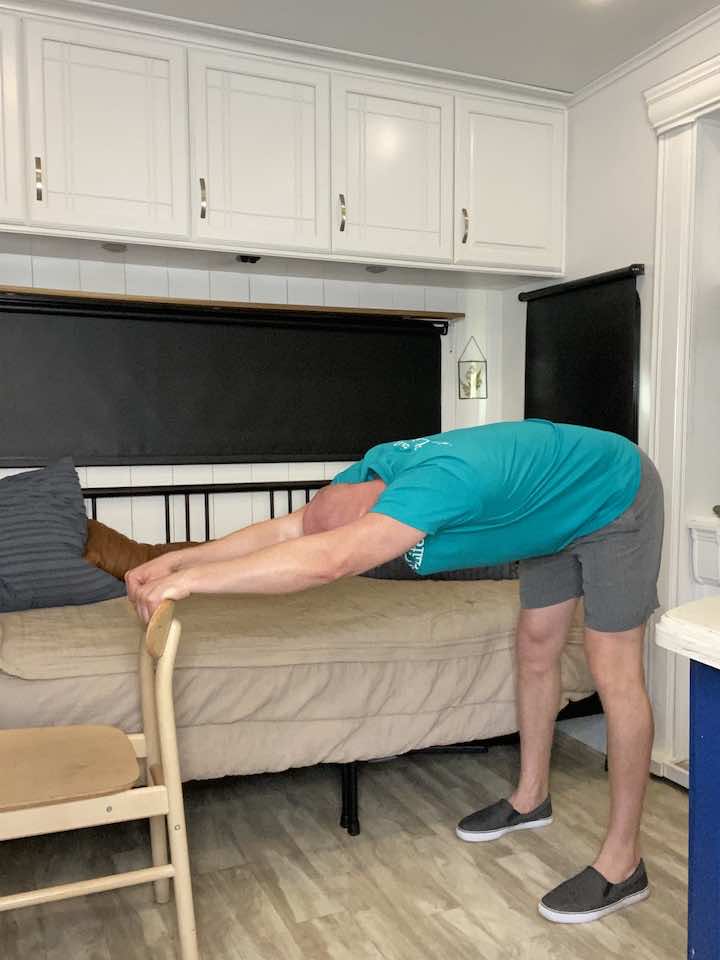
- Stand with your feet shoulder-width apart while facing the back of a chair.
- Place your hands on the backrest and hinge from your hips as you lower down. Ideally, you should lower to about 90 degrees but don’t go that far if you are especially tight. Bonus points if you are able to get your arms straight. If you can’t, that’s okay too.
- Hold for 20 seconds. Repeat 10 times.
B. Extension Exercises
1. Extension Stretch
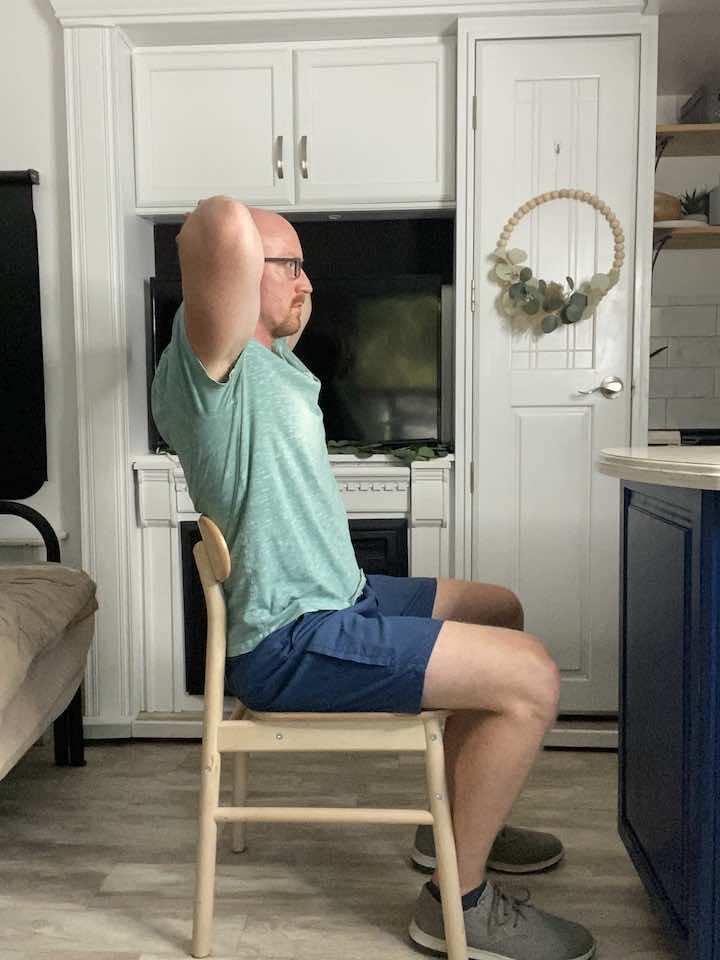
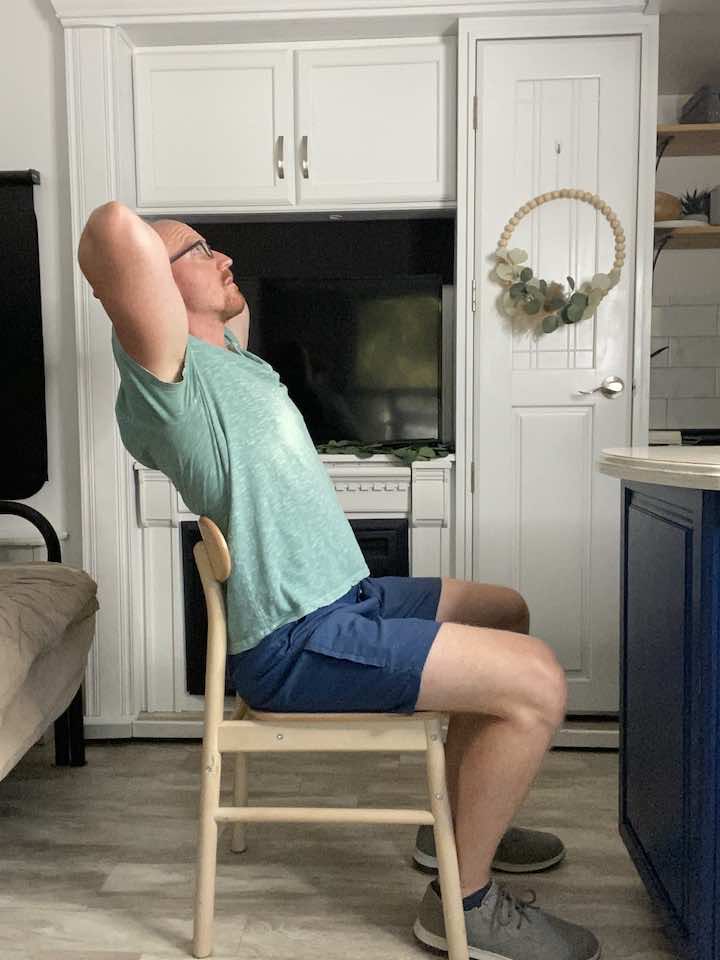
- Starting position: Using a chair with a back, place your hands behind your head to cradle it and your back positioned against the chair back.
- Slowly lean back, extending your back while looking up towards the ceiling. Make sure not to lean to far back so you don’t tip the chair!
- Hold the stretch for up to 5 seconds, then return to your starting position.
- Perform 10 repetitions.
2. Back Extension Using Foam Roller
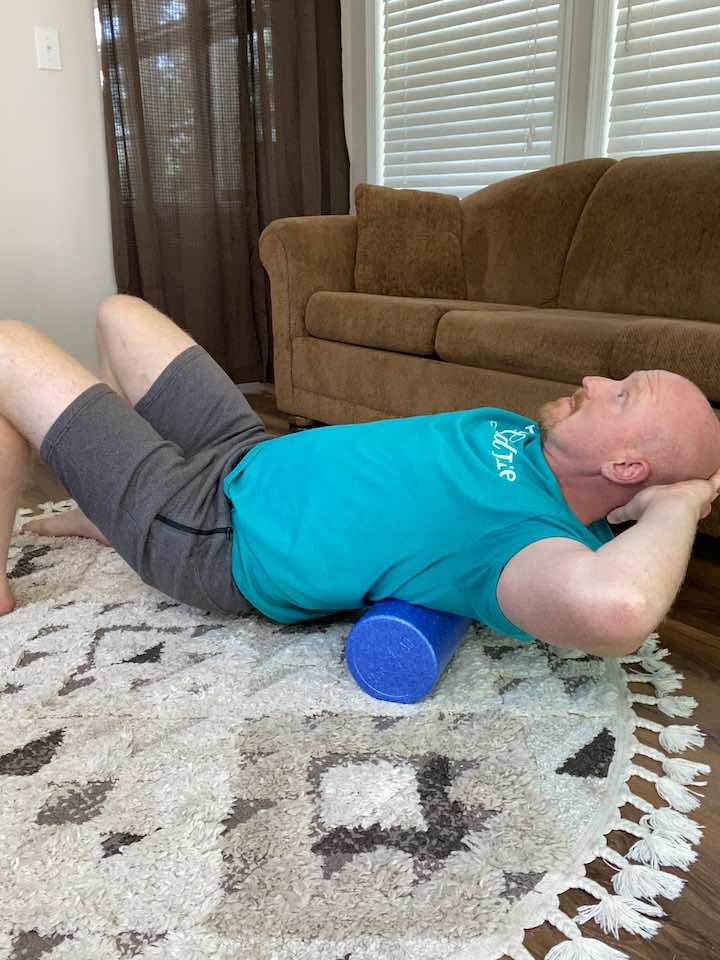
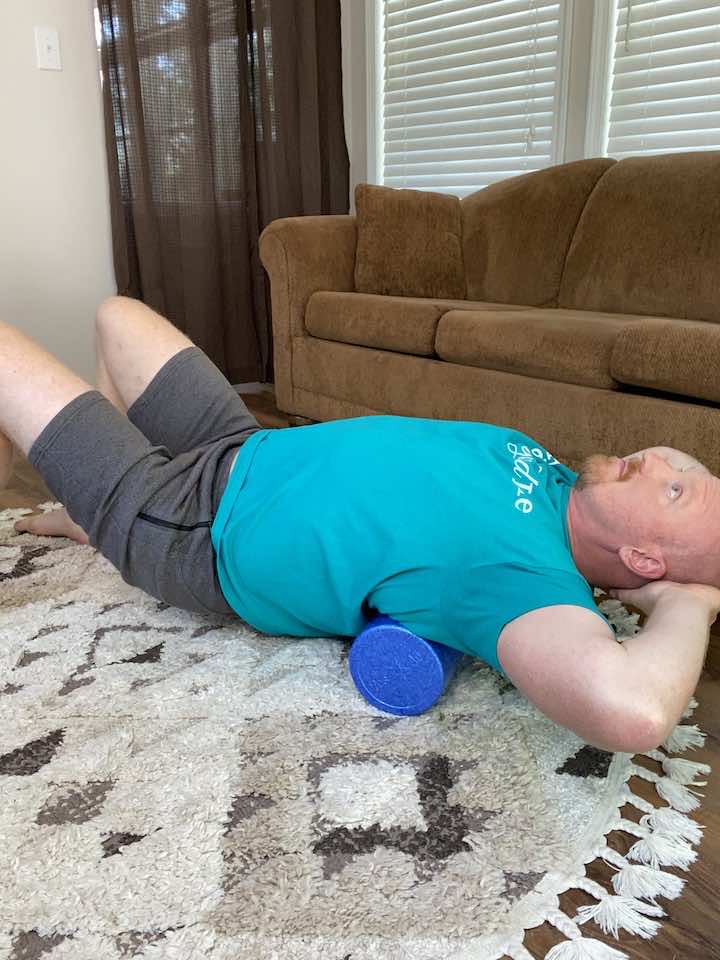
- Sit on your bum and lean back so that the foam roller is at the bottom of your scapula (bones behind your shoulders)
- Bring your hands behind your head and extend back, then come back to a neutral position.
- Scootch your bum about an inch down your mat away from the foam roller (this will move the roller higher up on your thoracic spine). Extend again, then come back to neutral.
- Repeat until you’ve reached your shoulders, moving just a little at a time to allow extension throughout your entire back.
3. Foam Roller Stretch for Low Back
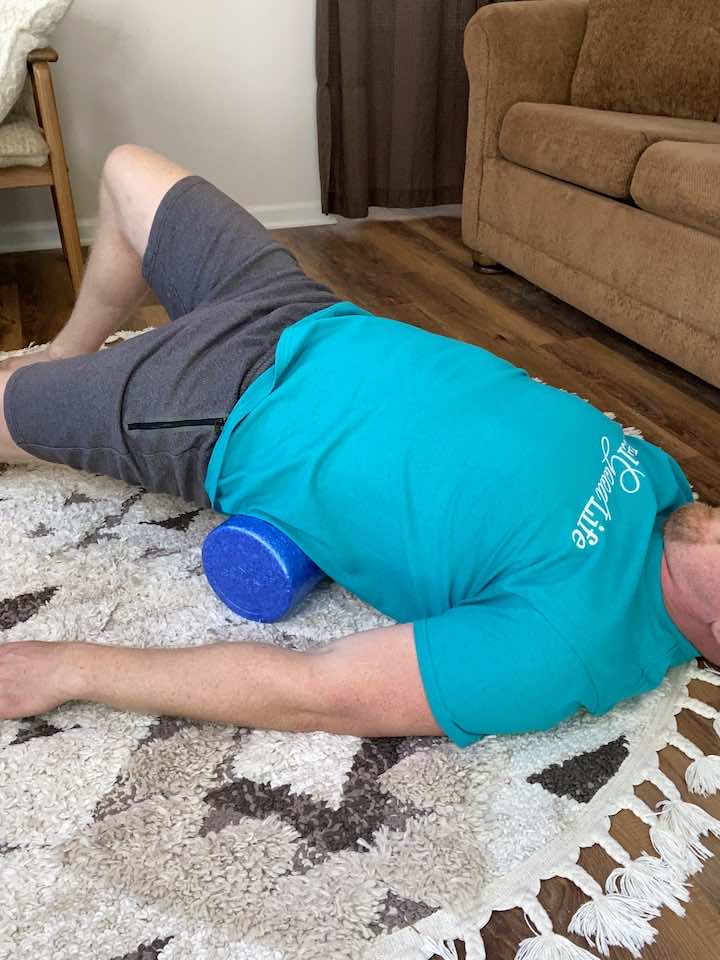
- Start by placing a foam roller on the floor.
- Sit down in front of the foam roller with your knees bent and feet flat on the floor.
- Slowly lie back onto the foam roller, positioning it underneath your lower back.
- Extend your arms out to the sides for support and stability.
- Relax your body and allow your lower back to rest on the foam roller gently.
- You can gently roll your body from side to side to target different lower back areas.
- Hold this position for about 30 seconds, allowing the foam roller to provide a gentle stretch and release tension in your lower back.
- Slowly roll off the foam roller and carefully stand up.
- Perform 3 repetitions.
C. Both Flexion and Extension Exercises
1. Seated Cat/Cow Stretch
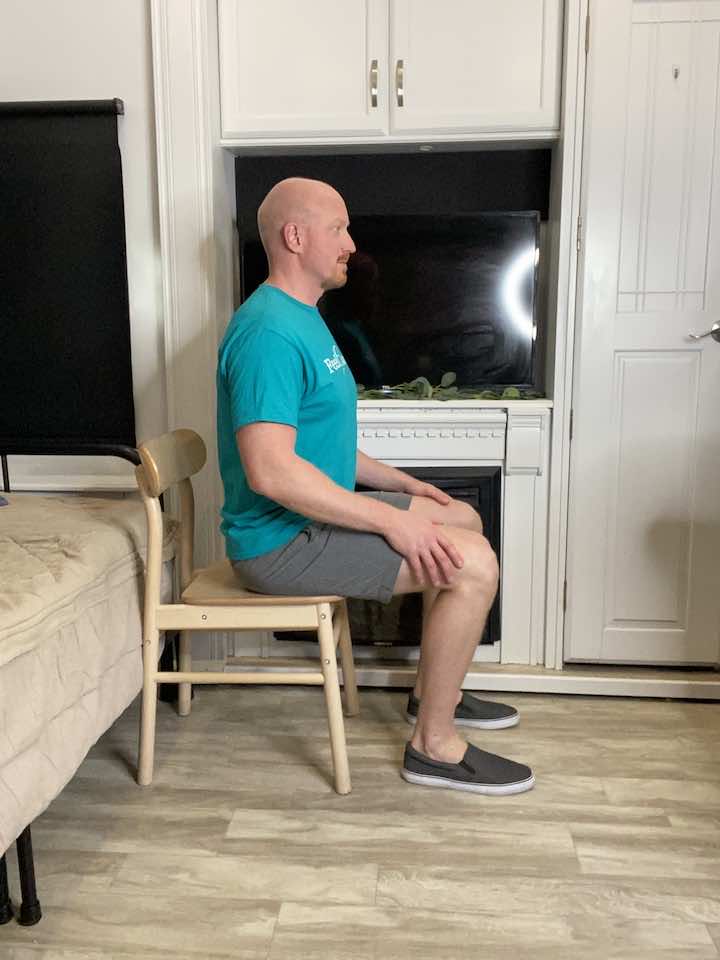
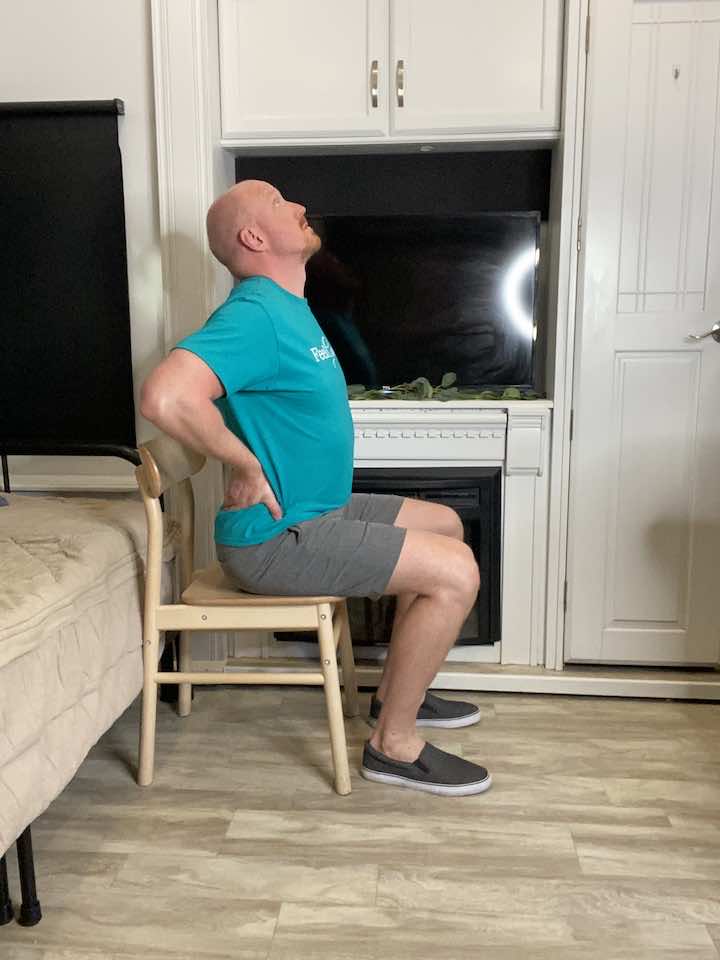
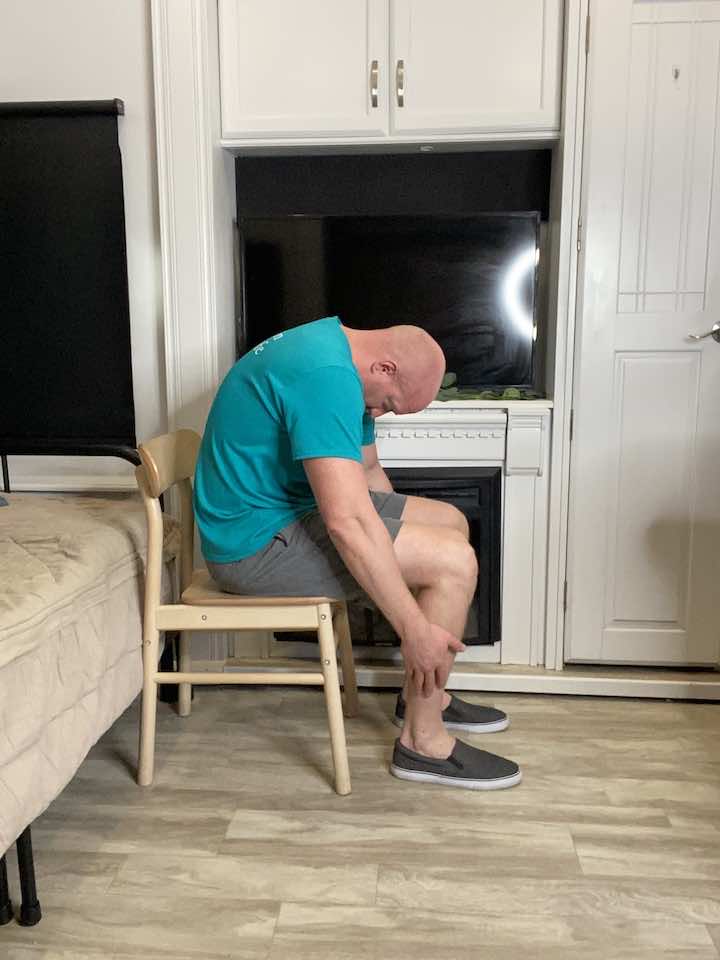
- Sit on the edge of your chair and place your hands on your knees.
- Take a deep inhale and expand your belly, sides, and back similar to the pelvic tilts.
- Upon exhaling, round your spine, sliding your hands down your knees and tucking your chin for greater depth.
- Go as far as comfortable (or until your exhale is complete).
- Inhale and return past the neutral position and into a slight back arch.
- Perform 10 repetitions for a total of 3 sets.
2. Seated Pelvic Tilts
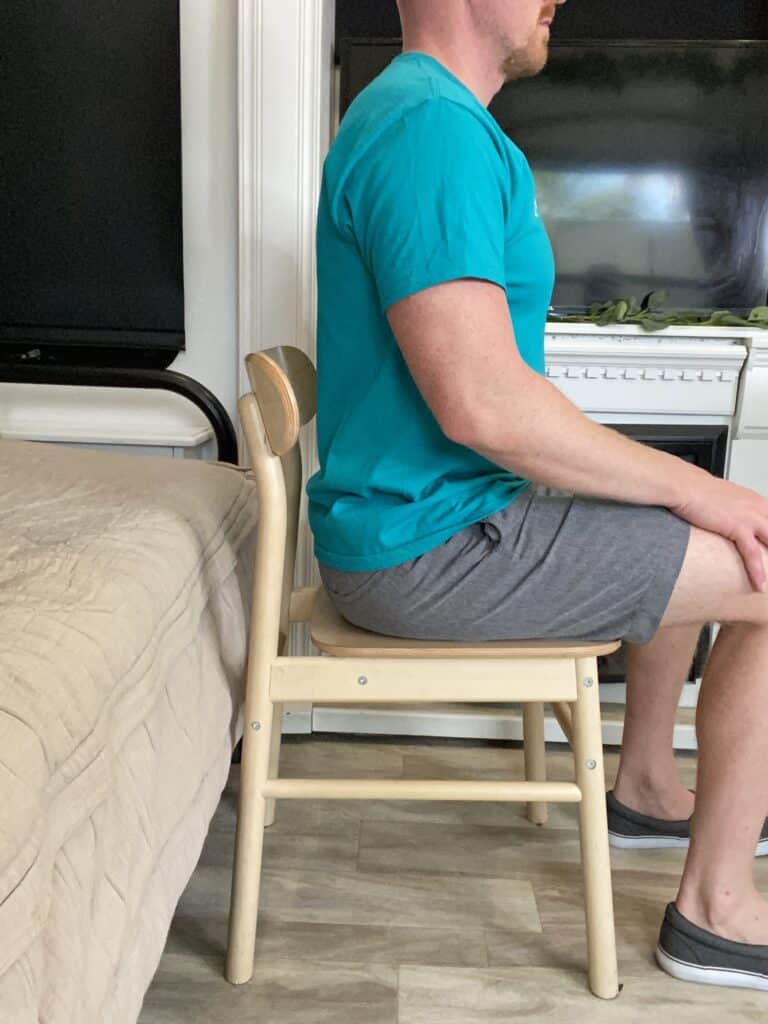
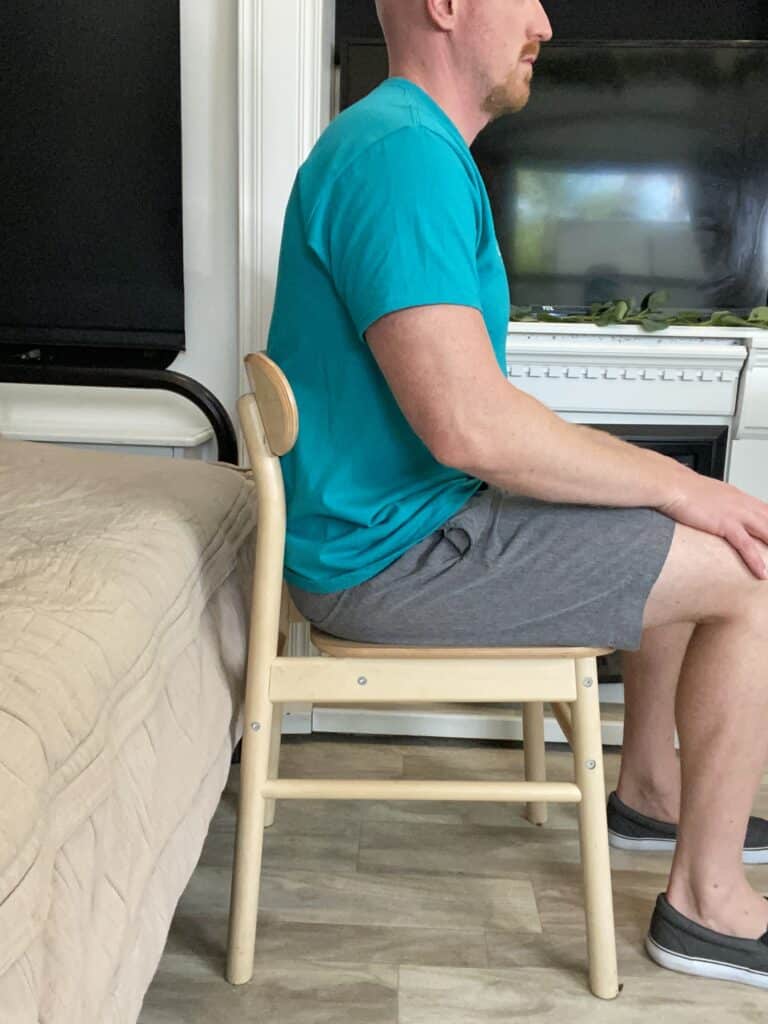
- Sit upright in a chair with your shoulders relaxed. Take a deep inhale and expand your belly.
- As you exhale, contract your abdominal muscles by pulling your belly button in towards your spine and flattening your low back against the chair.
- Hold this position for 5 seconds and then slowly relax.
- Perform 10 repetitions for a total of 3 sets.
Additionally, you can use decompressive positioning to relieve pressure on your back and provide rest.
Conclusion
Maintaining an active lifestyle is crucial for long-term relief from lower back pain. Regularly performing these stretches and exercises can help alleviate immediate discomfort, strengthen your back muscles, improve flexibility, and prevent future occurrences of pain.
It’s important to remember that everyone’s body is different, and what works for one person may not work for another. Therefore, always listen to your body, move at your own pace, and consult a healthcare professional if your symptoms persist or worsen. A proactive approach can manage lower back pain effectively, helping you lead a more comfortable and active life.




